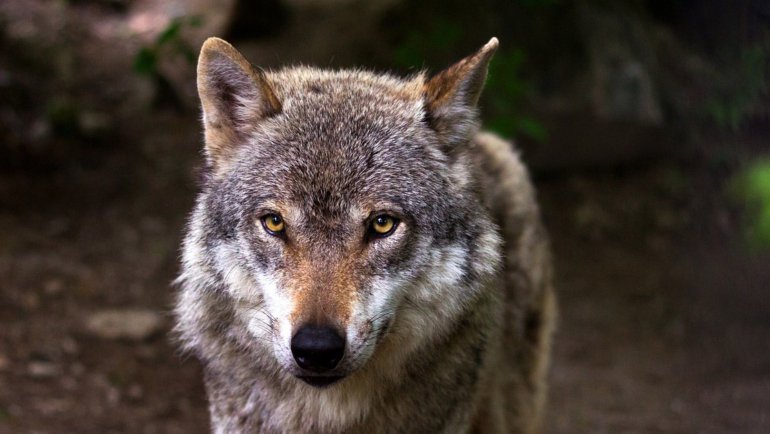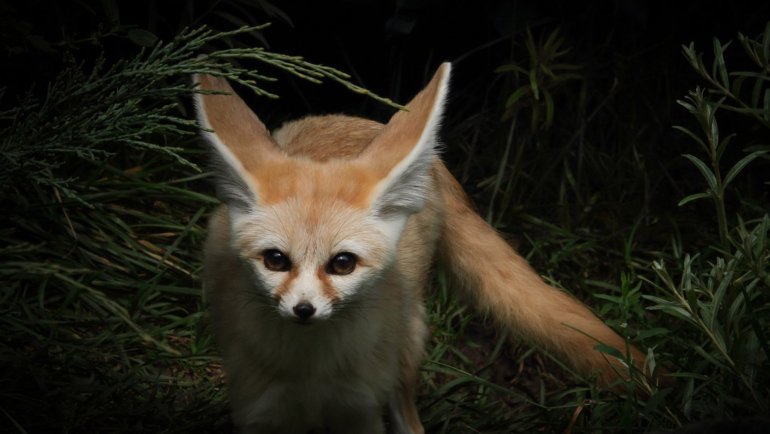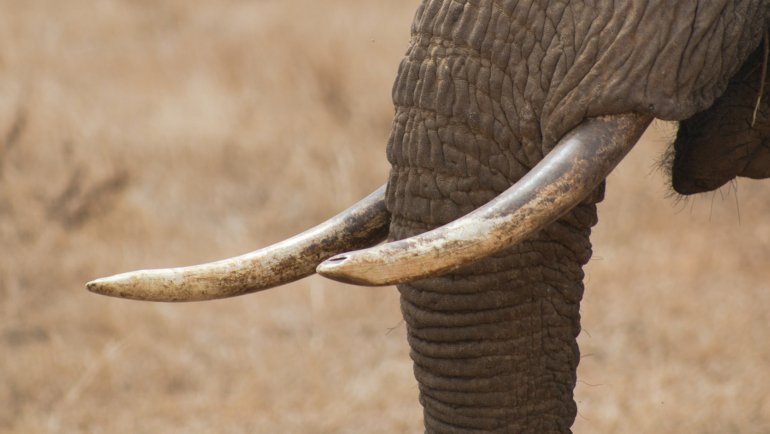Welcome to our comprehensive guide on the Bactrian camel, one of the most resilient and unique creatures on Earth. Known for their two humps and their remarkable ability to withstand both freezing cold and searing heat, these magnificent animals have adapted to thrive in some of the world’s harshest environments.
They’re a testament to nature’s incredible capacity for adaptation and survival. Throughout this article, you’ll learn about the Bactrian camel’s characteristics, habits, lifestyle, and conservation status.
The Bactrian Camel at a Glance
Classification
| Kingdom: | Animalia |
| Phylum: | Chordata |
| Class: | Mammalia (Mammals) |
| Order: | Artiodactyla |
| Family: | Camelidae |
| Genus: | Camelus |
| Species: | C. bactrianus |
Essential Information
| Average Size: | 10-11.5 ft (3-3.5 m) in length; 6-7.5 ft (1.8-2.3 m) at the shoulder |
| Average Weight: | 1,300–2,200 lbs (600–1,000 kg) |
| Average Lifespan: | 40-50 years |
| Geographical Range: | Central Asia, including the Gobi Desert and parts of Iran, Afghanistan, and Russia |
| Conservation Status: | The wild Bactrian camel (Camelus ferus) is Critically Endangered; the domesticated Bactrian camel (Camelus bactrianus) is not threatened (IUCN Red List) |
Species and Subspecies
The Bactrian camel, scientifically known as Camelus bactrianus, is a large ungulate native to the cold deserts of Central Asia. There are two main types of Bactrian camels: the wild Bactrian camel (Camelus ferus) and the domestic Bactrian camel (Camelus bactrianus).
The wild Bactrian camel is critically endangered, with a population estimated at less than 1,000. Genetically distinct from the domestic Bactrian camel, they are smaller, have less body fat, and are adapted to survive without water for longer periods.
The domestic Bactrian camel, on the other hand, is widely used in Central and Western Asia for transportation and as a source of wool, milk, and meat. They are larger, with more fat stored in their humps, and are generally more docile.
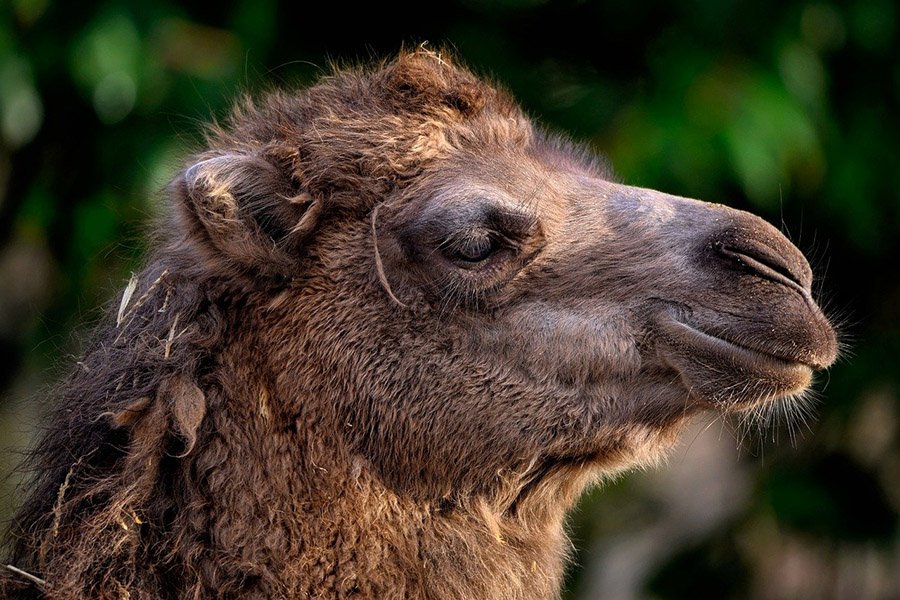
Description
Bactrian camels are known for their characteristic double humps, as opposed to their dromedary cousins, who have only one. These humps, which can stand about 30 inches (76 cm) high, store fat that the camel can use as both a food and water source during lean times.
Bactrian camels have a heavy build, with a body length of around 10-11.5 ft (3-3.5 m) and a height at the shoulder of about 6-7.5 ft (1.8-2.3 m). They typically weigh between 1,300–2,200 lbs (600–1,000 kg). Their color ranges from sandy beige to dark brown, with long, shaggy hair that they shed in clumps during warmer months.
A distinct feature of the Bactrian camel is its broad, leathery footpads which are designed to distribute weight evenly over soft sand and prevent them from sinking in. They also have two rows of long eyelashes, which along with a closeable nostril, protect against wind-blown sand.
There is some sexual dimorphism present in Bactrian camels, with males generally being slightly larger and heavier than females. Moreover, during the breeding season, males develop a soft palate, known as doula, which they inflate and dangle out of the side of their mouth to attract females.
Habitat and Distribution
Bactrian camels are native to the harsh deserts of Central and East Asia, encompassing regions of Mongolia, Kazakhstan, Afghanistan, Iran, and China. They have a phenomenal adaptation to extreme temperatures, capable of enduring winter lows down to -40°F (-40°C) and summer highs up to 100°F (38°C).
The two types of Bactrian camels occupy different habitats. Wild Bactrian camels are usually found in remote desert areas, often near water sources. In contrast, domestic Bactrian camels are found across various environments where they have been introduced by humans, including grasslands, mountains, and deserts.
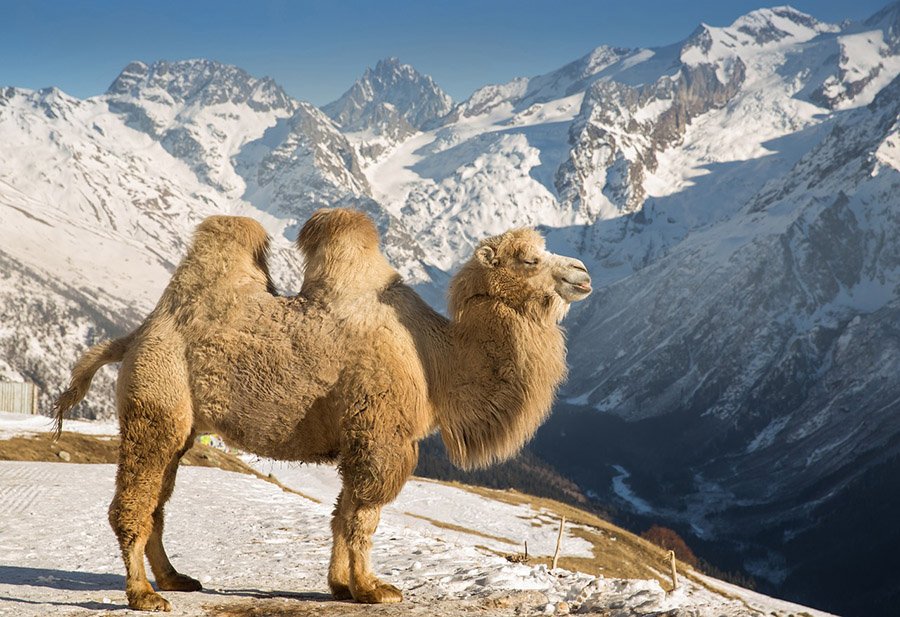
Behavior
Bactrian camels are diurnal creatures, most active during the day. They typically spend their time wandering in search of food and water, covering vast distances if needed.
They are highly social animals, generally found in small groups or herds led by a dominant male. Group sizes can range from 6 to 20 individuals, though larger congregations may form around plentiful resources or during the breeding season.
Bactrian camels communicate through a series of vocalizations, including moaning, groaning, and roaring sounds. Males often bellow loudly during the mating season. They also express emotions through body language – a scared or angry Bactrian camel might spit, kick, or attempt to bite.
One interesting behavior of the Bactrian camel is its ability to survive without water for long periods. They can drink up to 30 gallons (113 liters) of water at a time and then go without water for weeks or even months, depending on the availability of food. This adaptation is crucial for survival in their arid desert habitats.
Diet and Feeding Behavior
Bactrian camels are herbivores, feeding primarily on grasses, leaves, stems, and fruits of desert vegetation. They can eat thorny, salty, or bitter plants that most other animals would avoid, which is a valuable survival strategy in their harsh desert environments. Additionally, Bactrian camels are known to consume snow and ice during winter months as a means of hydration.
As grazing animals, they spend a considerable amount of time foraging for food. They have tough mouths that can chew thorny desert plants and are capable of eating any vegetation they find when food is scarce. They can also store fat in their humps, which the body can convert into water and energy when food and water are scarce.
Predators
Adult Bactrian camels are large and sturdy creatures that have few natural predators. In their native desert habitats, they can face threats from wolves and bears. However, their size and strength, along with their ability to form protective groups, typically discourage potential predators.
Young and weak camels may be more susceptible to predation. Additionally, humans can also pose a significant threat to Bactrian camels. Hunting and habitat loss due to human activities have significantly contributed to the decline of wild Bactrian camel populations.
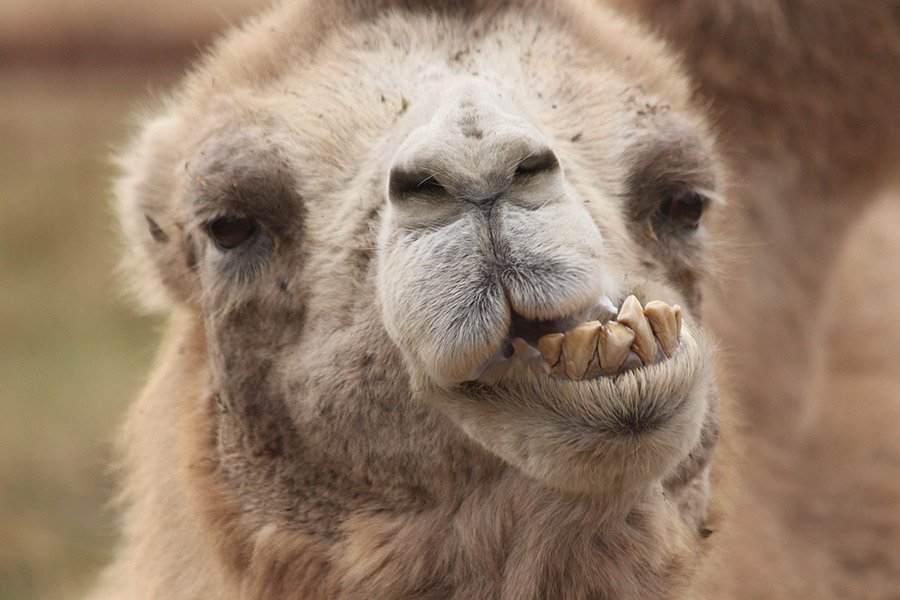
Reproduction and Life Cycle
Bactrian camels have a polygynous breeding system, meaning a male will mate with multiple females. The breeding season usually starts in the fall and extends to early winter. During this time, males become highly aggressive, fighting for access to females and often experiencing increased salivation and roaring to assert dominance.
Once pregnant, a female camel has a long gestation period that lasts for about 13 months. She typically gives birth to a single calf, although twins are possible, albeit rare. At birth, a baby camel, known as a calf, is already well-developed and can stand and walk alongside its mother within a few hours.
The calf nurses from its mother for about a year and a half, though it may start sampling solid foods after just a few months. Calves stay with their mothers for several years until they reach sexual maturity, which occurs at about 5 years for females and 5-8 years for males.
Conservation and Threats
The Bactrian camel is listed as Critically Endangered on the IUCN Red List. Their population has been declining due to a variety of factors, with hunting and habitat loss being the main threats. Additionally, competition for resources with domestic livestock and hybridization with domestic Bactrian camels also pose challenges.
Conservation efforts are focused on protecting the remaining wild Bactrian camel populations and their habitats. Several protected areas have been established in Mongolia and China.
In addition to this, zoos and conservation organizations worldwide are part of a cooperative breeding program designed to maintain a genetically diverse population of Bactrian camels. Public education and outreach about the plight of these unique creatures is also an important component of their conservation.
Fun Facts
- Bactrian camels are incredibly adaptable and can survive in temperatures ranging from -40°F in the winter to 120°F in the summer.
- Unlike the one-humped dromedary camel, the Bactrian camel has two humps. These humps store fat, not water, which can be converted into energy and water when resources are scarce.
- Bactrian camels are excellent swimmers. They’ve been known to swim across wide rivers during migrations.
- Their wide, tough feet help the Bactrian camel navigate over rough terrain like rocks and sand in their desert and mountainous habitats.
- The Bactrian camel’s nose has the ability to close to prevent sand from entering during sandstorms.
Frequently Asked Questions
Do Bactrian camels really store water in their humps?
No, this is a common misconception. The humps of Bactrian camels actually store fat, which can be converted into water and energy when necessary.
How can Bactrian camels survive in such harsh conditions?
Bactrian camels have a number of adaptations that help them survive in extreme conditions. They have two rows of long eyelashes to protect their eyes from sand and sun, nostrils that can close to keep out blowing sand, and wide, tough feet for walking on rough terrain. Their thick coats keep them warm in winter and reflect sunlight in the summer.
What do Bactrian camels eat?
Bactrian camels are herbivores and eat a wide variety of vegetation, including grasses, leaves, and shrubs. They’re also known to eat thorny, salty, or bitter plants that other animals avoid. During times of scarcity, they can survive on bones, seeds, and even their owner’s tents!
How long is the gestation period of a Bactrian camel?
The gestation period for Bactrian camels is about 13 months, typically resulting in a single calf.
Why are Bactrian camels endangered?
The wild Bactrian camel is listed as critically endangered due to hunting, habitat loss, competition with domestic livestock, and hybridization with domestic Bactrian camels
